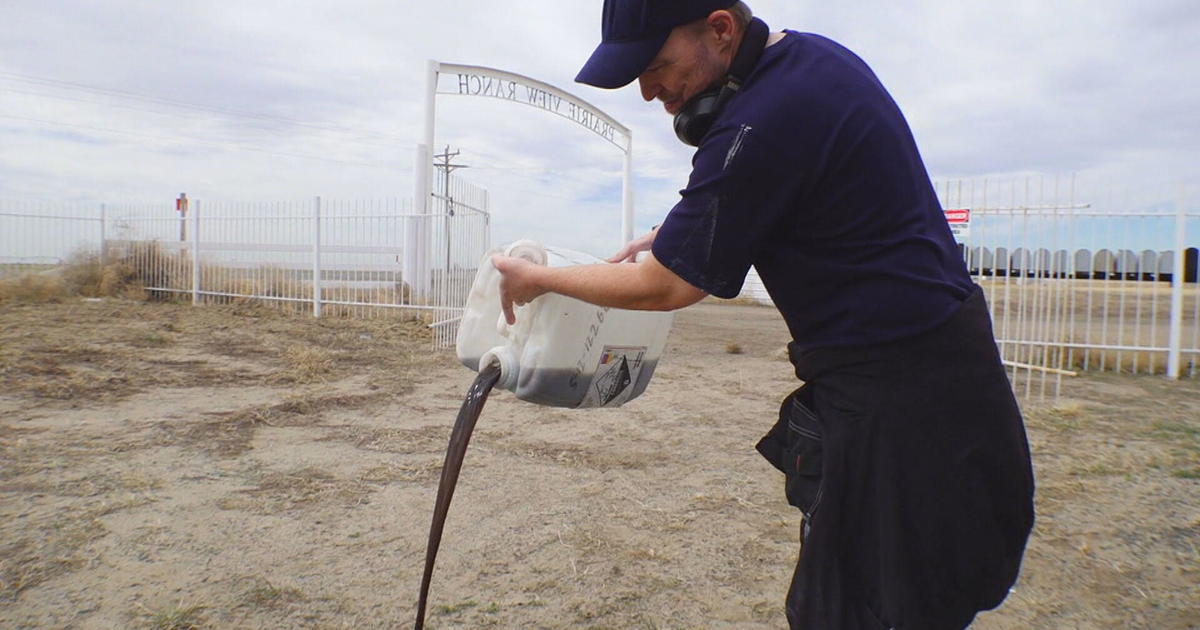Giant flying bug found at Arkansas Walmart turns out to be "super-rare" Jurassic-era insect
A 2012 trip to a Fayetteville, Arkansas, Walmart to pick up some milk turned out to be one for the history books. A giant bug that stopped a scientist in his tracks as he walked into the store and he ended up taking home turned out to be a rare Jurassic-era flying insect.
Michael Skvarla, director of Penn State University's Insect Identification Lab, found the mysterious bug – an experience that he says he remembers "vividly."
"I was walking into Walmart to get milk and I saw this huge insect on the side of the building," he said in a press release from Penn State. "I thought it looked interesting, so I put it in my hand and did the rest of my shopping with it between my fingers. I got home, mounted it, and promptly forgot about it for almost a decade."
Skvarla originally thought the bug he had plucked from the Walmart's exterior was an antlion. These bugs, according to the Missouri Department of Conservation, "look like fragile, drab damselflies, with an elongated body, four intricately veined wings mottled with browns and black, and clubbed or curved antennae about as long as the combined head and thorax."
But in the fall of 2020 when he was teaching an online course on insect biodiversity and evolution, Skvarla was showing students the bug and suddenly realized it wasn't what he originally thought. He and his students then figured out what it might be – live on a Zoom call.
"We were watching what Dr. Skvarla saw under his microscope and he's talking about the features and then just kinda stops," one of his students Codey Mathis said. "We all realized together that the insect was not what it was labeled and was in fact a super-rare giant lacewing."
A clear indicator of this identification was the bug's wingspan. It was about 50 millimeters – nearly 2 inches – a span that the team said made it clear the insect was not an antlion.
"I still remember the feeling," Mathis said. "It was so gratifying to know that the excitement doesn't dim, the wonder isn't lost. Here we were making a true discovery in the middle of an online lab course."
Skvarla then worked with a team to conduct molecular analyses on the bug. In November, his research on the specimen was published in the Proceedings of the Entomological Society of Washington.
Giant lacewings were once found across the entire continent, but by the 1950s, the insect had been destroyed in the eastern part of North America. Their disappearance is largely shrouded in mystery, with some theorizing that they may have disappeared because of increasing light pollution, new predators and potentially even there being new earthworms introduced into the environment that changed the soil's composition.
The discovery of the Arkansas specimen "represents a new state record and the first specimen recorded in eastern North America in over 50 years," Skvarla said in his research.
"This discovery suggests there may be relictual populations of this large, charismatic insect yet to be discovered," he wrote, adding ithat the location in which it was found may be "an ideal play for a large, showy insect to hide undetected."
"It could have been 100 years since it was even in this area — and it's been years since it's been spotted anywhere near it. The next closest place that they've been found was 1,200 miles away, so very unlikely it would have traveled that far," he said. "...But a finding like this really highlights that even in a run-of-the-mill situation, there are still a tremendous number of discoveries to make about insects."





